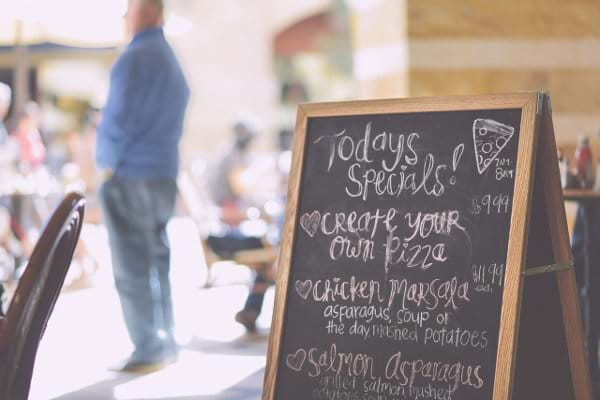
Menu optimization is a fine balance between attracting and pleasing customers while meeting the needs of a restaurant’s profits. It’s easy to focus too heavily on marketing while forgetting about the bottom line or focusing too much on the latter and not enough on the former. Not only that, but coupled with the overwhelming number of articles and books on menu optimization and lack of time everyone these days seems to face, it’s enough to drive someone crazy.
To help you use your time most efficiently and learn something new to make you better at your job (and hopefully more money in your pockets), we’ve compiled 16 of our favourite menu optimization tips. Study them! You’ll learn fantastic new tips you can implement on your menus to squeeze the most value out of your menu.
On Menu Items:
1. Keep track of what your customers order most and which menu items will generate the most profit for your bottom line and highlight those prominently. Source.
2. Update your menu seasonally – not only does this ensure you’re taking advantage of lower cost, in-season produce, but it also keeps the menu just fresh enough that repeat visitors are attracted back again and again. Keep the favourites and signature dishes on the menu but use seasonal specials as a way to try new menu items that can hopefully replace underperforming dishes with a high popularity, high profit margin winner. Source.
On Menu Design:
3. Never forget the attraction of mouth-watering, taste inducing descriptions combined with delicious food photography. Something that looks and sounds amazing to eat can increase sales by up to 27%. Source.
4. On average, customers only spend 90 seconds reading a menu. Reduce your menu length by eliminating under-performing menu items and increase white space making the menu easier to read while increasing the likelihood of high-margin items being chosen. Source.
5. Instead of featuring drinks and desserts on the main menu, where they can get lost, use separate menus for drinks and desserts to make them stand out. Also consider putting higher margin drinks and desserts on table tents to tantalize the appetite and leave them wanting more. Source.
6. Consider pushing more alcoholic beverage sales by highlighting complementary pairings on the menu. On average, the margin from a single-portion alcoholic beverage was nearly twice that of the average non-alcoholic beverage. Source.
7. Reduce visibility of lower margin menu items by relocating to back of menu. Source.
8. Utilize borders and shading to highlight and emphasize higher margin menu items to draw the eye. Source.
9. Reference Grandma’s homemade peach cobbler or Mama’s Succulent BBQ & Beer Pork to tug on heart strings. Utilizing menu psychology, customers like the names of mothers, grandmothers and other relatives on their menus – research shows they are much more likely to buy. Source.
10. You can also impact the sales of certain items based on their position on the page. Hot spots include the first page’s top right corner and the top or bottom item in each category. Source.
On Menu Pricing:
11. Embed price in the description of a menu item so you don’t attract attention to the price alone and unintentionally highlight all lower-priced items. Source.
12. Alternatively, remove dollar signs from the menu because it immediately reminds customers they’re spending money. Source.
13. Ensure your pricing speaks to your brand and restaurant concept – if you’re a high-end full service restaurant, pricing items with .99 is tacky and aggressive and doesn’t denote quality. If you’re a restaurant focused on providing value though, pricing that includes .99 works, but .95 works even better as it’s friendlier and more effective. Source.
14. Price the highest markup to be on the second-least expensive bottle of wine as many diners will order the second least-expensive bottle or glass of wine to avoid looking cheap. Source.
On Menu Strategy:
15. Learn to say no. In restaurants (same as in business) it’s easy to fall into the trap of wanting to be all things to all people by trying to put too many items on the menu to please everyone. Not only does this drive up food costs, but can also confuse customers. Focus on a niche that works with your restaurant brand. Doing this will ensure the critics fall by the wayside while the evangelists sing your praises far and wide. Source.
16. Ensure an open feedback loop exists from front of the house to the chef so guest feedback can be taken into account when revising the menu. If you don’t know what customers rave about and can do without, you won’t be able to know what to scratch off the menu and what needs more prominence. Source: March/April 2015 Canadian Restaurant & Foodservice News Print Edition



Any additional menu optimization tips you’ve used that we missed? Let us know in the comments!